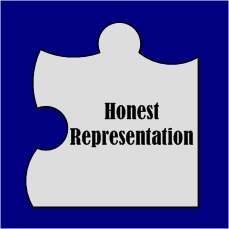India Has Long Waitlist for…DOMESTIC Adoptions of Boys AND Girls UPDATED

“Nearly 1,462 couples are in queue to adopt children aged between six months to five years, who were abandoned, relinquished and brought to the Department of Women Development and Child Welfare (DWDCW) here.
[IBN 3/19/12 by Nagaraju Koppula]
REFORM Puzzle Piece
 We would like to see honesty in adoption agency marketing when it comes to how many domestic adopters there are in each country. One of the old marketing ploys is that Indians will not adopt girls. That flies in the face of the truth.
We would like to see honesty in adoption agency marketing when it comes to how many domestic adopters there are in each country. One of the old marketing ploys is that Indians will not adopt girls. That flies in the face of the truth.
Update/August 19, 2013: Now more girls than boys are being placed domestically.
“Atish Kulkarni and wife Prachi can’t get enough of their eight-month-old laadli. “There are many [people] in our country who are ready to adopt boys. But we don’t subscribe to that bias. My wife and I were sure we wanted a girl. You love a daughter and she always loves you back,” explains Kulkarni, a resident of Dombivli, a town about 50km from Mumbai.
In a country notorious for its obsession with the male child, the 33-year-old Kulkarnis who adopted their baby just four weeks ago sound like an anomaly.
But, it turns out, the tables have turned. More and more Indian couples now prefer to adopt girls, so much so that many are even reportedly willing to wait for years to going through with the procedure.
The latest figures with the Union women and child development (WCD) ministry are the strongest endorsement of this trend. Data procured through an RTI plea shows that couples in India adopted 1,881 girls against 1,248 boys last year through specialised adoption agencies (SSAs). Spearheading this change is Maharashtra, where 343 girls were adopted against 242 boys last year. Tamil Nadu and Andhra Pradesh (see box) follow close on its heels. Karnataka is the only state where the adoption of boys (153 boys versus 131 girls) was significantly higher than girls.
Experts say the winds of change began to blow about five years ago. WCD officials claim that although adoption agencies under the Central Adoption Resource Authority have been reporting this change for some time now, figures to back it up have been procured for the first time.
“Till about a decade ago, the few couples who chose to adopt came went looking for a baby boy. But now, young working couples neither have qualms over adoptions nor do they show any gender bias. In fact, many insist on adopting girls,” says Jayashree Deshpande, 50, executive director of Janani Ashish Charitable
Trust, an adoption agency in Thane.
Last year, 28 children were adopted from the agency, about 70% of whom were girls. Deshpande’s agency is the only one in Maharashtra that specialises in in-country adoptions.
“There is a different emotional connect with daughters,” explains Atul Singh*, who adopted his daughter, now 3, from St Catherine’s Home in Andheri (W), Mumbai. Singh and his wife had already made up their minds about taking home a girl even before they visited the adoption home three years ago.
“The idea of nurturing a baby girl was far more exciting and the thought of being a father to a daughter was emotionally satisfying.
After a certain age, their (daughters’) bond with parents is stronger than that of boys,” justifies Singh.
Shweta Pandey*, a 30-year-old IT professional in Delhi, agrees.
“Maybe it’s just psychological, but we felt that girls are more
sincere and feel more responsible towards their parents. That influenced our decision to adopt Sarah, who is now a year old.”
Sr Helen, head of adoption at St Catherine’s Home, says the idea that girls grow up to be more caring and thoughtful of their parents helps many couples make that crucial adoption call. Records from the home show that of the 20 children who were adopted between April 2012 and March this year, 11 were girls and nine boys.
Sr Helen says the trend isn’t limited to childless couples; many with a biological child, too, prefer to adopt a girl when they want to become parents a second time around.
Sunil Arora, head of Balasha trust, an adoption home at Mahalaxmi, Mumbai, has his reservations about the social change. “The numbers [of adoptions] vary from state to state.
There is a definite demand for a girl child in Maharashtra and Kerala, but for Haryana, I have my reservations.”
He, however, adds that people now are even open to adopting an HIV-positive girl child. “When we get children, they are in poor physical conditions. In such cases, a girl child has a better chance of survival. The trend could be attributed to that as well.”
Of the nine adoptions from the Balasha trust in 2012, six were of girls.
Savita Nagpurkar, adoption in-charge of the Indian Association for Promotion of Adoption and Child Welfare (IAPA) in Matunga, Mumbai, explains that sometimes couples tire of the long wait for a girl child and settle for boys. But girls are the first preference for most.
Nigama Mascarenhas of the Family Service Centre, an adoption agency in Colaba, believes that the trend will ride out all prejudices. The agency’s records show that during April 2008-2009, eight girls and three boys were adopted. Between 2011 and 2012, the figures rose slightly — with five male and 11 female adoptions.”
dna exclusive: At adoption homes across India, there’s a cry for girls
[DNA India 8/18/13 by Ritika Chopra and Amrita Nayak Dutta]

Recent Comments